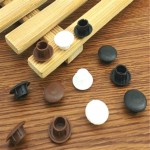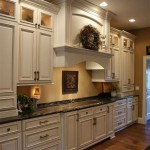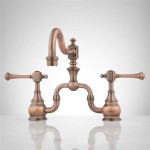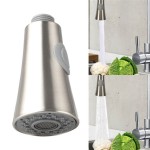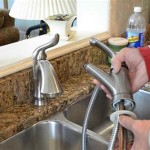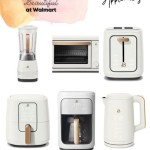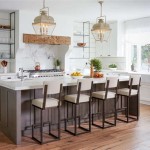How to Order Kitchen Cabinet Doors: A Comprehensive Guide
Replacing kitchen cabinet doors can significantly refresh the aesthetic of a kitchen without the expense and disruption of a full cabinet replacement. Ordering cabinet doors, however, requires careful planning and attention to detail. This article provides a comprehensive guide to navigating the process, ensuring accurate measurements, selecting appropriate materials, and understanding the options available to achieve the desired kitchen transformation.
1. Accurate Measurement: The Foundation of a Successful Order
Precise measurements are paramount when ordering replacement cabinet doors. Inaccurate measurements will invariably result in doors that do not fit, leading to delays, added costs, and frustration. It is critical to understand the different types of cabinet door constructions and how to measure each type correctly.
Overlay Doors: An overlay door covers a portion of the cabinet frame when closed. When measuring for overlay doors, determine the desired overlay amount. The overlay is the distance the door extends beyond the cabinet frame on each side. Standard overlays are typically ½ inch, ¾ inch, or 1 ¼ inches. To calculate the door size, measure the opening (the visible portion of the cabinet frame) and add twice the overlay amount to both the width and the height. For example, if the opening is 15 inches wide and 30 inches high, and the desired overlay is ½ inch on all sides, the door size should be 16 inches wide (15 + ½ + ½) and 31 inches high (30 + ½ + ½).
Pay close attention to hinges when measuring for overlay doors. Concealed hinges require specific bore hole locations on the door. Ensure that the chosen hinges are compatible with the cabinet frame and specify the hinge bore hole information when ordering.
Inset Doors: An inset door sits flush with the cabinet frame when closed. Measuring for inset doors requires even greater precision than overlay doors, as there is minimal allowance for error. Measure the exact opening size (the inside edge of the cabinet frame) and subtract a small reveal. The reveal is a slight gap between the door and the frame, typically 1/16 inch to 1/8 inch on each side.
For example, if the opening is precisely 15 inches wide and 30 inches high, and a reveal of 1/16 inch is desired on all sides, subtract 1/8 inch (1/16 + 1/16) from both the width and the height. The door size would be 14 7/8 inches wide and 29 7/8 inches high.
Inset doors require specific hardware designed for inset applications. The hinges must allow the door to swing clear of the frame. Ensure that the chosen hardware is compatible and that the correct dimensions are used when calculating the door size.
Full Overlay Doors: A full overlay door almost completely covers the cabinet frame, leaving only a small portion visible. The measurement process is similar to standard overlay doors, but the overlay amount is typically larger, around 1 ¼ inches or more. The larger overlay creates a more modern, seamless look.
Measuring Double Doors: When ordering doors for a double cabinet (two doors that meet in the middle), measure the entire opening width and height. Then, divide the width by two and subtract a small gap, typically 1/8 inch, to allow the doors to open and close freely without rubbing against each other. Remember to account for the overlay or inset requirements as described above.
It is highly recommended to measure each door opening individually, even if the openings appear to be identical. Slight variations in cabinet construction or settling over time can lead to differences in dimensions. Using a steel measuring tape is essential for accuracy. Fractional measurements should be converted to decimals for easier calculation and ordering.
Document all measurements carefully, noting the location of each door within the kitchen. A detailed spreadsheet or diagram will help prevent confusion when placing the order.
2. Material Selection and Style Considerations
The choice of material and style significantly impacts the aesthetic and durability of the kitchen cabinet doors. Understanding the available options and their respective characteristics is vital for making informed decisions.
Wood: Wood is a classic choice for kitchen cabinet doors, offering warmth, beauty, and versatility. Common wood species include maple, oak, cherry, and alder. Each species has unique grain patterns and staining characteristics. Maple is a durable hardwood with a tight grain, making it ideal for painted finishes. Oak is a strong and durable hardwood with a prominent grain pattern, well-suited for stained finishes. Cherry is a luxurious hardwood with a rich color and smooth texture. Alder is a softer hardwood that accepts stains well and is often used as a more affordable alternative to cherry.
Solid wood doors are constructed from a single piece of wood or multiple pieces joined together. Solid wood doors are durable and can be refinished, but they are susceptible to expansion and contraction with changes in humidity. Engineered wood products, such as MDF (Medium-Density Fiberboard), offer greater stability and resistance to warping. MDF doors are typically painted rather than stained, as they lack a natural wood grain.
Laminate: Laminate doors consist of a substrate (usually particleboard or MDF) covered with a decorative laminate layer. Laminate doors are durable, easy to clean, and resistant to scratches and moisture. They are available in a wide range of colors and patterns, including wood-grain simulations. Laminate doors are often a more affordable option than wood doors.
Thermofoil: Thermofoil doors are made by wrapping MDF with a thin layer of vinyl. Thermofoil doors are seamless, easy to clean, and resistant to chipping and peeling. They are available in a variety of colors and textures. However, thermofoil doors are susceptible to heat damage and may not be suitable for use near ovens or dishwashers.
Glass: Glass doors add a touch of elegance and sophistication to a kitchen. Glass doors can be clear, frosted, textured, or stained. They are typically used on upper cabinets to display decorative items. Glass doors require careful handling and cleaning.
Style Considerations: The style of the cabinet door should complement the overall design of the kitchen. Common cabinet door styles include:
Shaker: Shaker doors are characterized by a simple, clean design with a recessed center panel. Shaker doors are versatile and can be used in both traditional and modern kitchens.
Raised Panel: Raised panel doors feature a center panel that is raised above the surrounding frame. Raised panel doors are often used in traditional kitchens.
Flat Panel: Flat panel doors have a smooth, flat surface. Flat panel doors are often used in modern and contemporary kitchens.
Slab: Slab doors are simple, frameless doors with a flat surface. Slab doors are commonly used in minimalist and contemporary kitchens.
Consider the existing hardware in the kitchen when choosing a cabinet door style. The new doors should complement the existing hardware, or the hardware should be replaced to match the new doors.
3. Understanding Ordering Options and Specifications
Ordering kitchen cabinet doors involves specifying various options and details to ensure the doors meet the required specifications. Careful attention to these details will prevent errors and delays.
Edge Profiles: The edge profile refers to the shape of the door's edge. Common edge profiles include square, eased, roundover, and bevel. The choice of edge profile affects the overall look and feel of the door. Square edges are clean and modern, while rounded edges are softer and more traditional.
Boring for Hinges: Most cabinet door manufacturers offer pre-drilled holes for hinges. Specify the type of hinge to be used and the required bore hole pattern. Common hinge types include concealed European-style hinges and traditional face-frame hinges. Providing accurate hinge specifications is crucial for ensuring that the doors align properly with the cabinet frame.
Finish Options: The finish of the cabinet door is another important consideration. Options include unfinished, primed, painted, and stained. Unfinished doors allow for customization with a paint or stain of choice. Primed doors are prepared for painting. Painted doors are finished with a durable paint coating. Stained doors are finished with a stain that enhances the natural wood grain.
When ordering painted doors, specify the desired paint color and sheen. Sheen refers to the level of gloss in the paint. Common sheen levels include matte, eggshell, satin, semi-gloss, and gloss. Matte finishes are less reflective and hide imperfections better, while gloss finishes are more durable and easier to clean.
When ordering stained doors, specify the desired stain color and topcoat. The topcoat provides protection and enhances the durability of the stain. Common topcoat options include lacquer, varnish, and polyurethane.
Grain Direction: For wood doors, specify the desired grain direction. The grain direction refers to the orientation of the wood grain relative to the door's dimensions. Vertical grain is typically used for taller doors, while horizontal grain is often used for wider doors.
Special Instructions: Include any special instructions or requests when placing the order. This may include specific hardware requirements, custom dimensions, or unique design elements.
Vendor Selection: Choosing a reputable and reliable vendor is crucial for a successful cabinet door replacement project. Research different vendors, compare prices, and read customer reviews before making a decision. Look for vendors that offer a wide selection of materials, styles, and finishes. Ensure that the vendor provides clear and detailed ordering instructions and offers customer support to address any questions or concerns.
It is advisable to order a sample door before placing a full order. A sample door allows to assess the quality of the materials, the accuracy of the finish, and the overall appearance of the door. This will help make a confident decision and avoid costly mistakes.
Thorough planning, precise measurements, and careful consideration of the available options are essential for ordering kitchen cabinet doors that meet specific needs and preferences. By following the guidelines outlined in this article, one can navigate the ordering process with confidence and achieve a successful and satisfying kitchen transformation.

How To Buy Kitchen Cabinet Doors Now

Fast Cabinet Doors Custom Replacement For Kitchen Cabinets Cupboards
:strip_icc()/101398528-e43cfa74aa51415e877d5fd93c7c33af.jpg?strip=all)
23 Stylish Ideas For Kitchen Cabinet Doors

Custom Solid Wood Slat Kitchen Doors Toronto Gta

Best Kitchen Cabinet Refacing For Your Home The Depot

Update Your Kitchen With Replacement Cabinet Doors N Hance Ontario

Guide To Choosing Kitchen Cabinets With Glass Doors

Grey Cabinet Doors For A Modern Look Nieu

Popular Cabinet Door Styles For Kitchens Of All Kinds

Kitchen Cabinet Door Styles Cabinets Of The Desert
Related Posts

